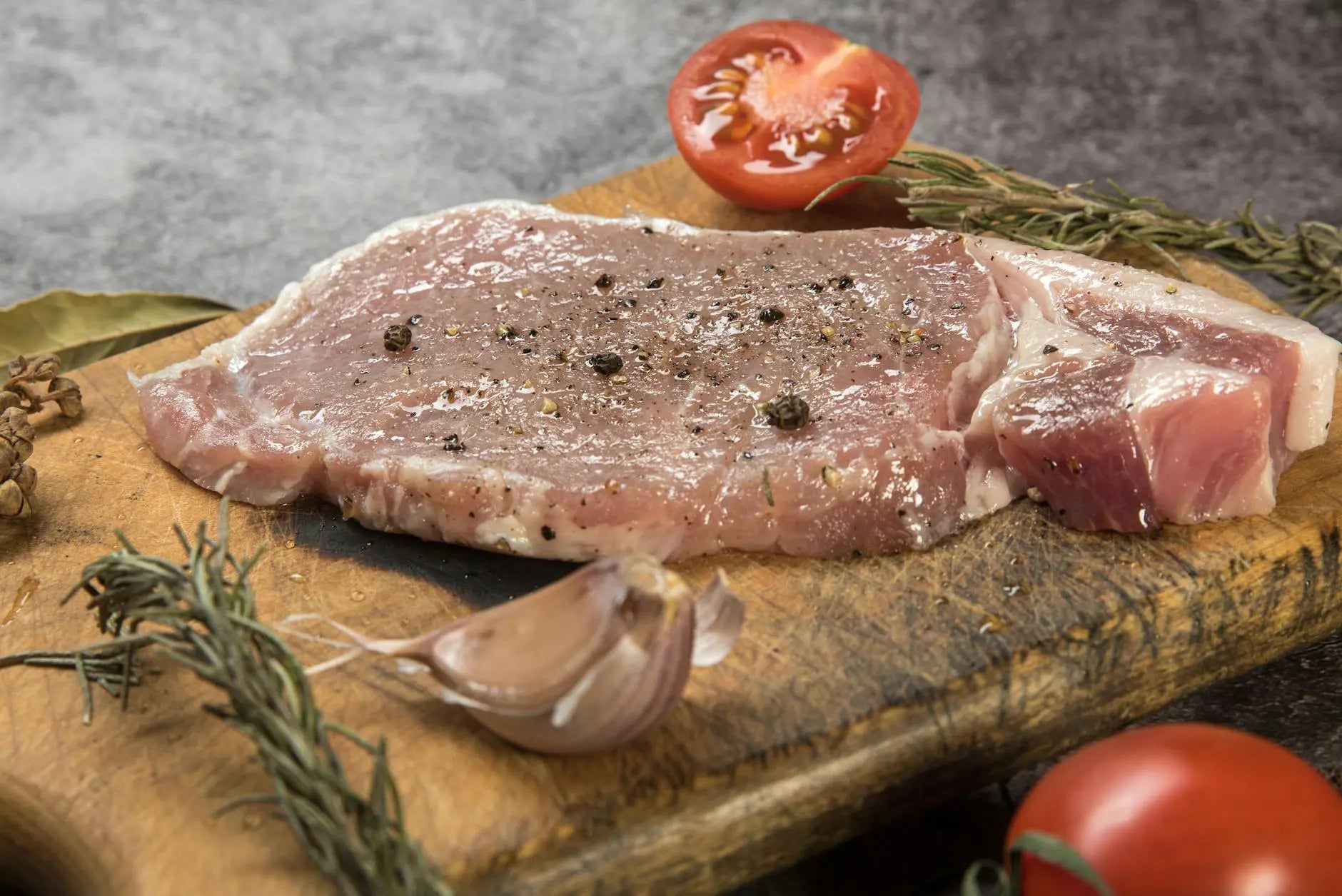Understanding Food Freshness
Grasping the nuances of food preservation is pivotal in ensuring the longevity and safety of the foods you enjoy. Proper food storage is not only a matter of maintaining taste but also a crucial aspect of food safety.
Importance of Proper Food Storage
Storing food correctly is essential to extending its shelf life, maintaining nutritional value, and preventing foodborne illnesses. When it comes to meat products, like pork, understanding the correct storage procedures is especially important. Ensuring that your pork is stored at the appropriate temperature in your refrigerator can drastically affect both its freshness and safety for consumption. You might find our article on pork perfection: know the ideal duration for keeping pork in the fridge insightful for further information.
Factors Affecting Food Freshness
Several variables can influence how well food retains its freshness in your refrigerator:
- Temperature: The temperature of your fridge should be set below 40°F (4°C) to slow bacterial growth.
- Humidity: Certain compartments within your fridge can regulate humidity, which is crucial for produce.
- Air Circulation: Good airflow in the fridge can prevent cold spots and ensure even cooling.
- Packaging: Proper packaging helps protect food from cross-contamination and drying out.
- Expiration Dates: Keeping track of when food was purchased and its use-by dates can prevent spoilage.
| Factor | Ideal Condition |
|---|---|
| Temperature | < 40°F (4°C) |
| Humidity | High for produce, low for meat and dairy |
| Air Circulation | Consistent throughout the unit |
| Packaging | Airtight and leak-proof |
| Expiration Dates | Clearly marked and adhered to |
Remember, your refrigerator is a tool that, when used correctly, can greatly aid in preserving the freshness of how long pork lasts in the fridge and many other perishables. Explore our articles for a deeper dive into optimal storage solutions for various foods, including unlocking the secrets: discover how long rice can stay fresh in the fridge and never waste pizza again: freeze your slices like a pro.
Storing Pork in the Fridge
Storing pork properly in the fridge is essential to preserving its freshness and ensuring it remains safe to consume. Adhering to the right storage guidelines can significantly extend the shelf life of pork, whether it's fresh or cooked.
Initial Storage Guidelines
Upon bringing pork home, it's important to store it in the refrigerator as soon as possible. The USDA recommends that pork should be refrigerated at temperatures at or below 40°F to prevent the growth of bacteria. If you have a large quantity or won't be using the pork within a few days, consider sectioning it into smaller portions. This can help with both space management in your fridge and ensuring you only thaw what you need later on.
For optimal freshness, here are some general timelines for refrigerating pork:
| Pork Product | Refrigeration Time (at or below 40°F) |
|---|---|
| Fresh Pork (raw) | 1-2 days |
| Ground Pork | 1-2 days |
| Cooked Pork | 3-4 days |
| Pork Leftovers | 3-4 days |
For more detailed information, check out our article on pork perfection: know the ideal duration for keeping pork in the fridge.
Packaging and Placement
Proper packaging is crucial to prevent cross-contamination and to preserve the quality of the pork. It's recommended to keep pork in its original packaging if it's sealed and leak-proof. However, if the packaging is opened or not secure, transfer the pork to airtight containers or wrap it tightly in aluminum foil or plastic wrap to prevent air exposure and moisture loss.
Placement in the fridge also matters. Raw pork should be stored on the lowest shelf to avoid any potential drippings contaminating other foods. If your refrigerator has a dedicated meat drawer, use it for storing raw pork to maintain a slightly cooler environment.
For cooked pork, ensure it's cooled down before refrigerating to maintain the internal fridge temperature. Place it in airtight containers and keep it separate from raw meat to avoid contamination.
To get more insights into organizing your fridge for optimal food safety and storage, take a look at our guide on conquer clutter: expert tips for side by side refrigerator organization.
By following these initial storage guidelines and packaging tips, you can effectively extend the freshness of pork in your fridge. Always remember to observe safe handling practices to enjoy delicious and healthy pork dishes.
Shelf Life of Pork in the Fridge
When it comes to preserving the freshness of pork, understanding how long it can last in the fridge is key. Whether you have fresh or cooked pork, proper storage is crucial to maintaining its quality and safety.
Fresh Pork
Fresh pork has a relatively short shelf life in the refrigerator. To ensure maximum freshness, it's recommended to store fresh pork in the fridge for no longer than 3 to 5 days. If you're not planning to cook the pork within this time frame, freezing it is a better option to extend its shelf life.
Here's a quick reference table for different types of fresh pork:
| Type of Fresh Pork | Shelf Life in the Fridge |
|---|---|
| Pork Chops | 3 to 5 days |
| Pork Loin | 3 to 5 days |
| Ground Pork | 1 to 2 days |
| Pork Liver & other organ meats | 1 to 2 days |
Always remember to store fresh pork in the coldest part of your fridge, typically at the bottom or at the back of the shelf. For more insights on proper food storage, you might want to read about unlocking the secrets of how long rice can stay fresh in the fridge.
Cooked Pork
Once pork is cooked, its shelf life is extended. Properly stored, cooked pork can last in the fridge for about 4 to 7 days. To maintain its quality, ensure that the pork is stored in airtight containers or tightly wrapped with aluminum foil or plastic wrap.
Here's a table to help you keep track of the shelf life of various cooked pork dishes:
| Type of Cooked Pork | Shelf Life in the Fridge |
|---|---|
| Cooked Pork Chops | 4 to 7 days |
| Cooked Pork Loin | 4 to 7 days |
| Leftover Pork Casserole | 4 to 7 days |
| Pulled Pork | 4 to 7 days |
To extend the freshness of your pork dishes further, consider freezing them. For example, you can learn how to never waste pizza again by freezing your slices like a pro, which can also apply to freezing cooked pork.
Remember, these time frames are general guidelines. Always check the pork for any signs of spoilage before consumption. To know more about the signs of spoiled pork, you may want to continue reading the next section in this article or refer to pork perfection: know the ideal duration for keeping pork in the fridge.
Signs of Spoiled Pork
When it comes to preserving the freshness and determining how long pork lasts in the fridge, recognizing the signs of spoilage is critical for your health and safety. Pork, whether fresh or cooked, can go bad, and consuming spoiled pork could lead to foodborne illness. Here's what you need to look for to ensure the pork you're planning to consume is still safe to eat.
Visual Indicators
The first signs of spoiled pork are often visible to the naked eye. Here's what to look for:
- Color Changes: Fresh pork should have a pinkish hue with white fat marbling. If you notice any dullness or a grayish color, it's a sign that the pork is starting to spoil.
- Mold Growth: Any signs of green or black fuzzy spots indicate mold, and the pork should be discarded immediately.
| Sign | Safe to Eat | Action Required |
|---|---|---|
| Pink with white fat | Yes | None |
| Dull or gray color | No | Discard |
| Mold growth | No | Discard |
Odor and Texture Changes
Spoiled pork can also be identified by changes in odor and texture:
- Unpleasant Smell: Fresh pork has a mild, not particularly noticeable smell. If the pork emits a strong, sour, or ammonia-like odor, it's a clear indication that it has gone bad.
- Slimy Texture: If the pork feels slimy or sticky to the touch, even after washing, this is a sign of bacterial growth, and the pork should not be consumed.
| Sign | Safe to Eat | Action Required |
|---|---|---|
| Mild smell | Yes | None |
| Strong, sour odor | No | Discard |
| Slimy texture | No | Discard |
For more information about food shelf life and how to store your groceries effectively, you may find our articles on unlocking the secrets discover how long rice can stay fresh in the fridge and stop wasting tomatoes optimal fridge storage times revealed helpful.
Remember, if you're ever in doubt about the freshness of your pork or any other perishable food, it's always best to err on the side of caution and dispose of it. Food safety should always be a top priority, so make sure to follow proper safe handling practices to reduce the risk of foodborne illness.
Safe Handling Practices
Ensuring pork remains safe to eat requires following certain safe handling practices, particularly when it comes to thawing and reheating. These methods are designed to prevent foodborne illnesses and maintain the quality of the pork.
Thawing Pork Safely
Thawing pork properly is essential to preserving its freshness and preventing the growth of harmful bacteria. There are several safe methods to thaw pork:
- Refrigerator Thawing:
- Place the pork in the refrigerator, keeping it in its original packaging or in a leak-proof container.
- Allow for slow, safe thawing, generally 24 hours for every 5 pounds of pork.
- Thawed pork can remain in the refrigerator for an additional 1 to 2 days before cooking.
- Cold Water Thawing:
- Submerge the pork in cold water, ensuring it's in a leak-proof package.
- Change the water every 30 minutes to maintain cold temperatures.
- Estimate approximately 30 minutes per pound for thawing time.
- Microwave Thawing:
- Use the microwave's defrost setting, following the manufacturer's instructions.
- Cook the pork immediately after thawing as some areas may begin to cook during the microwave thawing process.
Remember, thawing pork at room temperature is not recommended as it can allow bacteria to multiply rapidly. For more information on proper food storage and thawing techniques, visit our guide on unlocking the secrets discover how long rice can stay fresh in the fridge.
Reheating Pork
Reheating pork to the right temperature is crucial for both food safety and taste. Here are some guidelines to ensure you reheat your pork properly:
-
Internal Temperature: Reheat pork to an internal temperature of 165°F as measured by a food thermometer.
-
Method: You can reheat pork in the oven, on the stovetop, or in the microwave. Ensure it's heated evenly throughout.
-
Oven Reheating:
-
Preheat the oven to 350°F.
-
Place the pork in a baking dish with a small amount of water or broth to keep it moist.
-
Cover with foil to retain moisture and heat until it reaches the recommended temperature.
-
Stovetop Reheating:
-
Use a skillet over medium heat with a bit of oil or broth.
-
Stir frequently to promote even reheating.
-
Microwave Reheating:
-
Cover the pork with a microwave-safe lid or wrap to keep it moist.
-
Use a medium power setting to avoid overcooking.
For optimal safety and quality, avoid reheating pork multiple times as this can increase the risk of foodborne illness and degrade the meat's quality. If you're interested in more food preservation tips, check out our article on preserving perfection how long does rotisserie chicken last in the fridge.
Extending Pork Freshness
To enjoy pork at its best and to maximize its shelf life, proper storage techniques are essential. Beyond refrigeration, you have methods to extend the freshness of pork, ensuring you can savor its flavor for future meals.
Freezing Pork
Freezing is a reliable way to preserve pork's quality over a longer period. When freezing pork, here are steps to follow:
- Wrap Properly: Use airtight packaging or heavy-duty freezer bags to prevent freezer burn and to seal in freshness. Double wrapping is recommended for extra protection.
- Label the Date: Always label your packages with the date of freezing to keep track of how long the pork has been stored.
- Portion Control: Consider portioning the pork into meal-sized quantities before freezing to make thawing and cooking more convenient.
Here's a table indicating the recommended freezing times for different pork products:
| Pork Product | Freezing Duration (Months) |
|---|---|
| Fresh Pork Cuts (steaks, roasts) | 4-6 |
| Ground Pork | 1-3 |
| Cooked Pork Dishes | 2-3 |
For a comprehensive guide on freezing various foods, you might find our article on never waste pizza again freeze your slices like a pro insightful.
Repurposing Leftover Pork
Leftover pork need not go to waste. Here are creative ways to repurpose it:
- Stir-Fries: Add bite-sized pieces to a vegetable stir-fry for a quick and delicious meal.
- Soups and Stews: Incorporate leftover pork into soups or stews to enhance their flavor and protein content.
- Sandwiches and Wraps: Use shredded pork to make hearty sandwiches or wraps, complemented with your favorite condiments and fresh veggies.
When repurposing cooked pork, remember to:
- Store Correctly: Keep leftover pork in the refrigerator in airtight containers to maintain its quality.
- Consume Timely: Aim to consume repurposed pork within 3-4 days to enjoy its best taste and to ensure food safety.
For more tips on food storage and maximizing the shelf life of your groceries, consider reading about preserving perfection how long does rotisserie chicken last in the fridge or explore how long do carrots last in the fridge for insights on vegetable storage.
By implementing these methods, you're not only safeguarding your health but also reducing food waste and making the most of your purchases. Whether you choose to freeze or repurpose your pork, these strategies will help maintain its freshness and flavor for when you're ready to enjoy it.
Get Your Upgrade or New Addition at Fridge.com
Shop the world's best brands at Fridge.com.
Whether you're searching for your perfect fridge, freezer, wine fridge, beer fridge, ice maker, or kegerator, we have what you need.
We also have tons of awesome articles about kitchen stuff and home news. Enhance your home, garage, backyard, patio, and office with the coolest essentials. With every necessary type of residential refrigerator or freezer in our collection, we've got you covered.
Elevate your game and shop now at Fridge.com!






